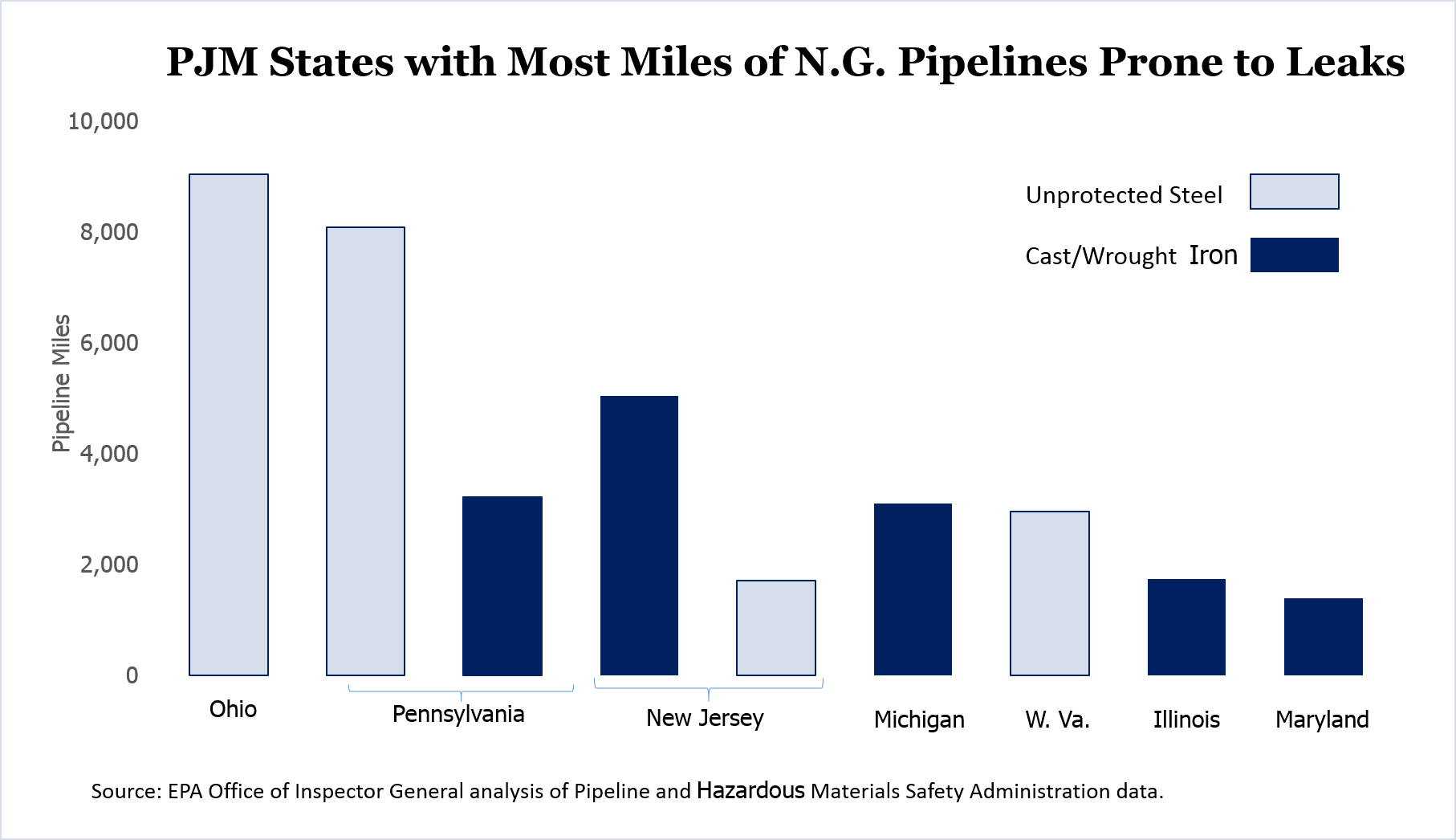Federal officials should do more to reduce leaks in natural gas distribution pipelines that are costing consumers and undercutting efforts to combat climate change, the Environmental Protection Agency’s Inspector General said in a report last week.
The report estimates that about $200 million worth of natural gas escapes from distribution lines annually because of a lack of coordination between EPA and federal pipeline regulators and a lack of financial incentives for utilities.
Methane is responsible for 9% of U.S. gas emissions and has a global warming potential that is more than 20 times that of carbon dioxide. About 10% of methane emissions are from distribution pipelines with leaks most likely on older pipelines made of cast iron, wrought iron and unprotected steel. Such pipelines account for about 8% of the 1.2 million miles of distribution mains in the U.S.
Seven PJM states — Ohio, Pennsylvania, New Jersey, Michigan, West Virginia, Illinois and Maryland — rank in the top 10 for the most miles of cast/wrought iron or unprotected steel pipelines, the IG said.

Only 22 states (or utilities within the states) have adopted initiatives to replace cast iron or unprotected steel pipelines, the report said.
Leaks can be fixed by inserting flexible plastic liners inside existing lines or using composite wrap to repair defects such as dents and corrosion. Some LDCs run regular inspection and maintenance programs.
But LDCs often have no incentive to fix leaks because they are allowed to pass on to customers the costs of lost gas while the benefits of reduced fuel costs are also passed on to consumers. “Thus, there is a financial disincentive for LDCs to proactively locate and repair leaks,” the report said. “The cost of the product lost is easy for LDCs to recover while the costs to repair, replace or retrofit pipelines poses more of a cost recovery challenge.”
The report recommends that the EPA work with the PHMSA to toughen regulations and partner with state utility regulators to develop ratemaking models that incent LDCs to proactively repair leaks.


